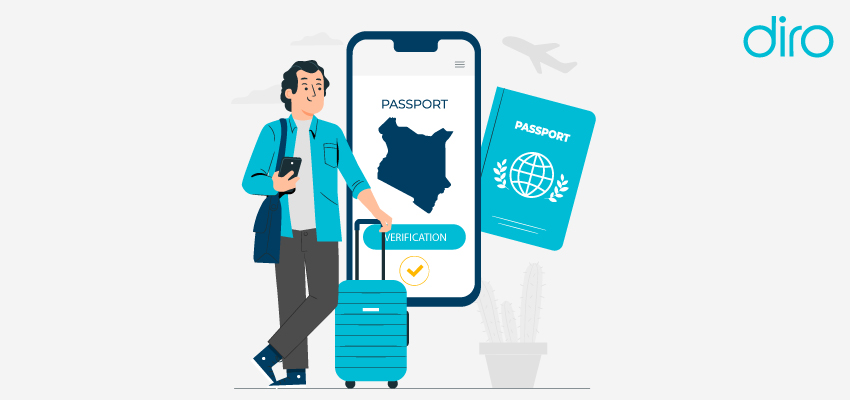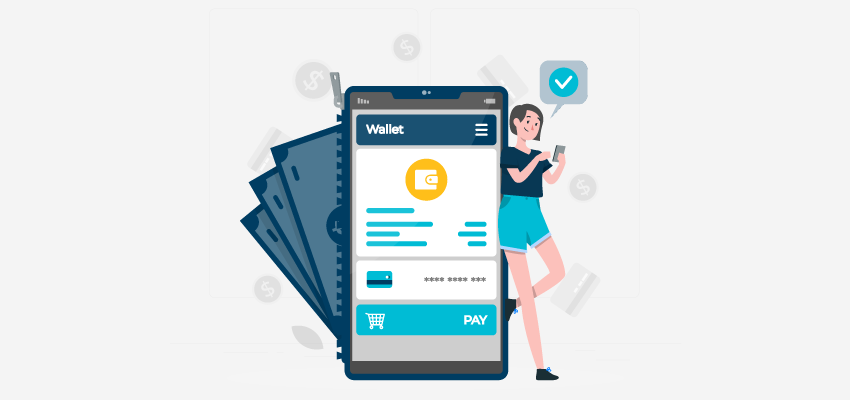Passports are a crucial document while conducting KYC checks for verifying identity. This includes countries like Kenya, where document fraud is a huge problem. Financial institutions, telecom providers, or government services all need to confirm the validity of a Kenyan passport to prevent fraud and ensure secure onboarding.
Kenya has made significant strides in digitizing citizen data and introducing biometric passports, yet fraudulent documents are still a major challenge. This requires businesses to invest in robust passport and document verification solutions. Businesses that still rely on manual or unverified data can be vulnerable to compliance risks, financial losses, and reputational damage.
In this blog, we’ll dive into the common fraud tactics used in Kenya, the passport verification process, digital and biometric technologies involved, and the broader benefits and challenges. Let’s get started.
Common Methods of Fraud in Kenya
Kenya, like many nations, grapples with multiple forms of identity fraud. Fraudsters often exploit weak verification systems or unregulated agents to forge or manipulate identity documents, including passports. Common methods include document forgery, impersonation, and identity theft.
1. Physical Document Altering
Document forgery typically involves the physical or digital alteration of a genuine passport. This might include editing personal details or replacing photographs. With access to advanced editing software, fake passports can closely resemble real ones, making visual inspection insufficient for detection.
2. Impersonation
Impersonation involves using someone else’s legitimate documents to access services. In many cases, fraudsters may obtain stolen or lost passports and use them before the rightful owner raises an alert. This type of fraud is common in mobile money services and SIM card registrations.
3. Identity Theft
Identity theft is more sophisticated. Fraudsters use compromised personal information—like national ID numbers and dates of birth—to create synthetic identities or acquire real documents illegally. These identities can then be used for criminal activities, loans, or illegal immigration.
Understanding the common types of fraud is crucial to strengthening passport verification systems. To strengthen the systems, a policy and technological reform is needed at multiple touchpoints.
Kenyan Passport Verification Process
There are multiple steps that need to be followed to verify a Kenyan passport. This process includes ensuring the document is valid, unaltered, and belongs to the person presenting it. The process typically starts with a visual inspection, followed by database checks and, if available, biometric validation.
1. Inspecting Physical Features
The initial step includes reviewing the physical features of the passport—cover quality, watermarks, holograms, microtext, and machine-readable zones (MRZ). Trained personnel can often spot inconsistencies in layout, fonts, or data formatting, which may indicate tampering or counterfeiting.
2. Verification Against 3rd Party Databases
Next comes data validation against government or trusted third-party databases. This involves cross-referencing the passport number, date of issue, expiry date, and holder details with national immigration records. In Kenya, some institutions have access to the eCitizen platform or integrated identity verification APIs that interface with government systems.
3. Biometric Verification
For higher-risk cases, biometric verification is employed to ensure the document belongs to the correct individual. This can include fingerprint matching or facial recognition checks against the biometric data stored in the government database or embedded in e-passports.
The thoroughness of this process ensures that fake, stolen, or altered passports are flagged before further processing. It’s a vital step for any organization that requires strong identity assurance.
Kenya Passport Digital Verification Methods
As the world shifts to digital services, Kenya has introduced several methods for verifying passports electronically. These methods are faster, more scalable, and often more secure than traditional manual checks, making them ideal for KYC compliance.
1. OCR
One of the primary tools is Optical Character Recognition (OCR), which reads the machine-readable zone (MRZ) of the passport. This data is extracted and cross-checked with government records. OCR can quickly validate whether the document follows international formatting standards.
2. Near Field Communication
Near Field Communication (NFC) is also used for e-passports. Kenyan e-passports contain embedded chips that store personal and biometric data. NFC-enabled devices can read this chip and verify that the information matches the printed details. It’s extremely difficult to tamper with the chip, making it a reliable verification tool.
3. Third-Party Verification Solutions
A third-party online document verification solution like DIRO can add another layer of security to the passport verification process. Businesses can combine online document verification with passport verification to make the onboarding process extra secure.
Digital verification reduces human error and helps detect fraud instantly, making it crucial for industries like fintech, telecommunications, and insurance, where fast, accurate onboarding is key.
Tackling Document Fraud
Combating document fraud in Kenya requires a multi-layered approach that involves technology, policy enforcement, and public awareness. While new tools are available, successful implementation depends on their strategic use in both the public and private sectors.
1. Access to Centralized Database
One key strategy is increasing access to centralized databases for verification. Government institutions need to partner with private entities to allow secure, regulated access to immigration and identity databases. This enables real-time checks and flags suspicious activity early.
2. Training Staff
Another crucial element is training frontline staff. Whether it’s a bank officer or a mobile agent, they must be able to detect tampering signs and understand the verification tools at their disposal. Even the most advanced systems can fail if the human element is weak.
3. Digital Security Systems
Digital security measures like encrypted transmission, timestamped logs, and anti-spoofing algorithms also help maintain the integrity of digital verification systems. In addition, introducing QR codes, holograms, and NFC in passports increases the difficulty for forgers.
Finally, public education campaigns on the risks of selling or misusing identity documents can prevent fraud at the grassroots level. With these strategies, Kenya can significantly reduce document fraud while increasing trust in KYC processes.
Use of Biometric Verification for Passport Verification
Biometric verification has emerged as one of the most effective ways to confirm the identity of passport holders. In Kenya, where biometric data is now a part of national ID and passport systems, this method adds an extra layer of security to KYC procedures.
1. Fingerprint Verification
Fingerprint scanning is widely used in border control, mobile registration, and financial services. During verification, the passport holder’s fingerprint is matched against the record stored in government databases. This ensures the person presenting the passport is its rightful owner.
2. Facial Recognition
Facial recognition technology is another growing method. It compares a live image or selfie of the user to the photograph embedded in the biometric chip of the passport. This is especially useful for remote verification, such as in online banking or digital onboarding processes.
3. Voice & IRIS Recognition
Voice recognition and iris scanning are still emerging in the Kenyan context but could play a role in future security upgrades, especially for high-value transactions.
Biometric verification is difficult to fake, making it ideal for catching impersonators or stolen documents. It also enables fast, automated checks, which reduce waiting times and improve customer experience. For KYC, this means higher trust, fewer errors, and better fraud protection.
Benefits of Passport Verification in Kenya
Verifying passports accurately offers multiple benefits for both institutions and citizens in Kenya. For businesses, it ensures compliance with regulations and prevents financial losses from fraud. For individuals, it means a smoother, faster onboarding experience and greater identity protection.
1. Prevents Fraud
One major benefit is fraud prevention. With passport verification, organizations can identify fake or stolen documents early in the process. This protects not only the institution’s assets but also public safety by preventing criminals from accessing services under false identities.
2. Regulatory Compliance
Regulatory compliance is another key advantage. Banks, mobile service providers, and fintech platforms are legally required to perform KYC checks. Robust passport verification ensures that these obligations are met, avoiding penalties and maintaining licenses.
3. Digital Onboarding
Passport verification also supports seamless digital onboarding. With digital and biometric tools, users can be verified remotely within minutes. This improves user experience, speeds up service delivery, and boosts customer satisfaction.
Common Challenges of Passport Verification in Kenya
Despite technological advances, passport verification in Kenya still faces several challenges. These hurdles can compromise the effectiveness of KYC processes and expose institutions to risks.
1. Limited Access to Government Databases
One major issue is limited access to real-time government databases. Many organizations lack authorized channels to verify passport details directly with immigration systems. This results in delays, reliance on third parties, or skipping verification altogether.
2. Limited Infrastructure
Infrastructure limitations also pose a problem. Not all service providers have access to NFC-enabled devices or biometric scanners, especially in rural areas. This makes it hard to deploy advanced verification tools at scale.
3. Issues with Human Errors
Human error is another concern. Staff may misread details, overlook security features, or lack training on digital verification tools. Manual processes also leave room for insider fraud or bribery.
4. Data Privacy & Security
There’s also the issue of data privacy and security. With more institutions handling sensitive identity data, there’s a growing risk of data breaches or misuse. Ensuring proper encryption, access control, and audit trails is critical.
Finally, some citizens lack updated passports or may use alternative IDs, complicating verification. These systemic and operational challenges must be addressed to ensure passport verification is reliable, accessible, and secure across Kenya.
Conclusion
Passport verification is a cornerstone of secure and effective KYC in Kenya. As fraudsters become more sophisticated, the need for reliable, tech-driven verification methods becomes more pressing. Kenya’s transition to e-passports and digital identity systems offers a promising foundation, but challenges remain in terms of infrastructure, access, and awareness.
Combining traditional checks with biometric and digital tools allows institutions to verify identities with confidence. It minimizes fraud, ensures regulatory compliance, and improves customer experiences. For sectors like finance, telecom, and e-governance, this is not just beneficial—it’s essential.














